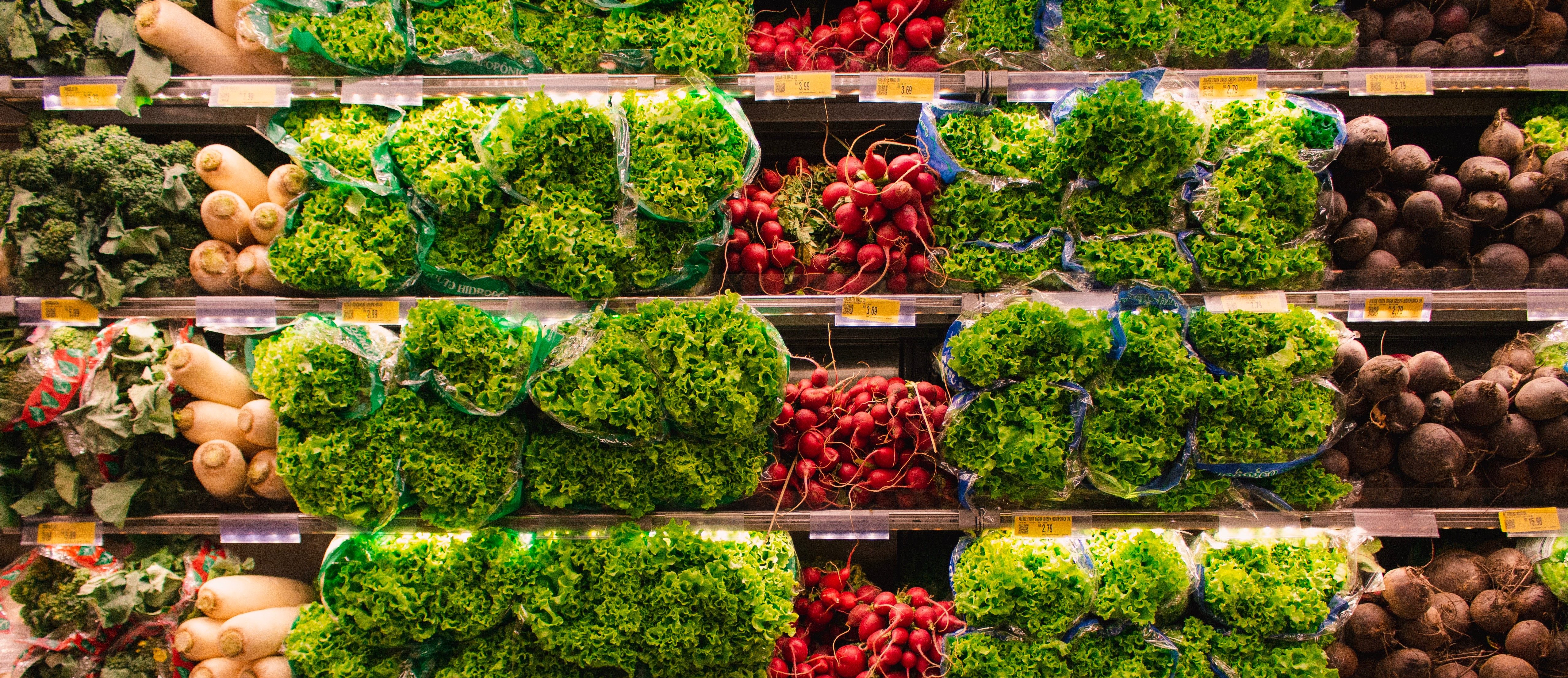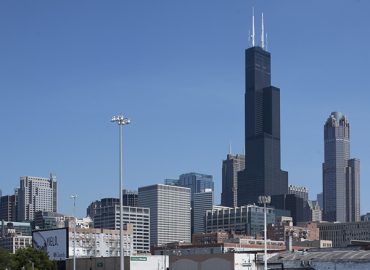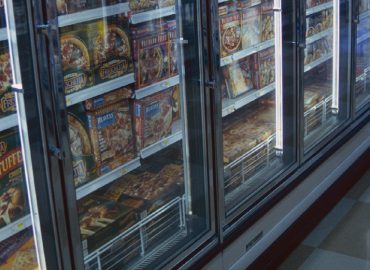In today’s economy, consumers are looking beyond the products they buy when striving to be green - they want a sustainable supply chain, too. In turn, retailers are improving their bottom line by incorporating a green storefront and corporate culture. Supermarkets operate on tight margins and energy costs can represent up to 10 percent of total operating costs.
According to a 2003 U.S. Energy Information Administration survey, supermarkets in the United States use 51 kilowatt-hours (kWh) of electricity annually and 41 cubic feet of natural gas per square foot, which adds up to an annual average of $5.31 per square foot for electricity and $0.38 for natural gas. With an average-size store measuring 40,000 square feet, these numbers equate to approximately $230,000 spent annually in energy costs and 1,900 tons of CO2 emitted into the atmosphere. If an average-sized store can save 10% in energy costs, it could add over $20,000 to its annual profits!
In a typical grocery store, refrigeration is usually the single largest energy consumer. A reduction in refrigeration use translates to lower heating bills, so improvements made to the refrigeration system (compressors, display cases, coolers, freezers) can generate large savings. Lighting and refrigeration together account for more than 50 percent of a supermarket’s total energy use. ENERGY STAR® estimates that one dollar in energy savings is equivalent to a $59 increase in sales.
Regardless of whether you rent or own your building, there are a number of energy-saving measures you can adopt to provide great returns for your supermarket. By investing in efficient energy use, you can reduce your operating costs, buffer your supermarket from future energy cost increases, lower your environmental impact, and increase your long-term profitability. Conservation measures also enhance the aesthetics of your store, improve comfort and health, and prove a solid commitment to the community you serve. At SEDAC, we are committed to helping you find the best energy options for your supermarket. This brochure explains the steps to take and the systems to implement so that you may provide your patrons and employees with a comfortable, energy-efficient environment.
Supermarket energy usage
As illustrated by the two figures below, lighting and refrigeration in an average-size supermarket account for about 80 percent of total electricity consumption, and space heating is responsible for 69 percent of natural gas use. Adopting energy efficient measures in these categories is crucial in reducing your supermarket’s costs.


Lighting solutions
- Harvest daylight by installing skylights over the sales floor to provide natural light and to be used in conjunction with an automatic dimming lighting system.
- Install occupancy sensors in storerooms, office areas, bathrooms, and maintenance closets to turn off lights when these spaces are unoccupied.
- Replace old fluorescent T8 lamps with LEDs. LEDs that work in coolers are now available too, as well as LEDs for display cases. Stores with high ceilings may consider swapping out metal halide lamps with LEDs as well. LED exit signs are inexpensive and easy to install while cutting energy use in half; these lights pay for themselves in one year and last ten years or more.
Low and No-cost energy solutions
- Turn things off. Assuming electricity costs $0.10/kWh, every 1000 kWh saved is equal to $100 off your utility bill. Shut off cash registers, computers, and deli cooking equipment when not in use. Train staff to turn off lights when they are not necessary.
- Turn things down. For equipment that cannot be turned off, consider turning it down to the lowest level possible.
- Check temperature settings. Energy is lost when settings are lower than needed. Common settings are between -14° and -8°F for freezers and between 35° and 38°F for refrigerators.
- Keep doors shut. Repeated fluctuations in temperature use more energy, damage food quality, and cost money.
- Schedule regular cleaning and maintenance. Ensure that equipment is clean for proper performance. Change air filters every month, inspect and replace gaskets around refrigerated-case doors quarterly, clean condenser coils quarterly to remove debris and grime, clean HVAC cooling coils at the beginning and end of cooling season, and tune up your furnace or boiler burner annually.
Energy saving solutions
HVAC system
- Install economizers that allow filtered outside air into the building when conditions are appropriate.
- Apply a reflective surface to the roof to reduce the cooling capacity required to condition the store in the summer months.
- Reclaim heat rejected from refrigerators and other equipment and redirect to heat sales floor and water used in restrooms and kitchens.
- Install ceiling fans. In the summer, a downward breeze increases comfort throughout the store which allows the temperature to be set a little warmer to save cooling costs. In the winter, ceiling fans move warm air that rises back down the walls and to the sales floor to make people more comfortable with less heat.
Kitchen
- Replace or install appliances with ENERGY STAR® rated ones (hot holding cabinets, fryers, ovens, ice makers, etc.).
- Turn off exhaust hoods in idle kitchens and install hood controllers to adjust the exhaust fan speed in response to changes in temperature, smoke, or vapor.
Water heating
- Replace old water heaters with high efficiency heaters. Consider tankless heaters which produce hot water on demand and only use energy when hot water is needed, thereby saving energy and reducing cost.
- Install a heat exchanger to capture the wasted heat of a store’s refrigeration rack system and use it to heat water for restrooms and kitchen use.
Refrigeration
Refrigeration accounts for over 50 percent of total electric energy use in the average supermarket, so it is crucial to explore energy efficient opportunities for its systems.
- Floating head pressure controls: with these controls, the compressor uses less energy during cooler weather.
- Heat recovery: heat rejected by the refrigeration rack can be redirected to heat sales floor and water used in restrooms and preparation areas.
- Vending machines and merchandisers: grocers can use ENERGY STAR® qualified vending machines and efficient refrigerated merchandisers to save up to 35 percent energy over standard models. Install specialized occupancy sensors to power down machines when not needed.
- Strip curtains: these curtains are installed on walk-in refrigerators to allow the door to remain open for convenience while minimizing cooling loss.
- Anti-sweat heat controllers: avoid ice buildup and fogging of freezer doors by installing controls that automatically turn on heaters only when fogging or ice buildup occur.
- Ambient sub-cooling: use an oversized condenser and an additional heatexchanger to sub-cool the liquid refrigerant and save 1 to 9 percent of cooling costs.
- Mechanical sub-cooling: use extra cooling capacity from the medium temperature rack system to pre-cool the refrigerant used by low-temperature coolers.
- High-efficiency motors: upgrade to Electronically Commutated Motors (ECM) inside display cases, freezers, and coolers to increase efficiency.
Display case shields
As previously mentioned, refrigeration is the single largest electricity user in supermarkets. To reduce heat gains, we recommend using low emissivity display case shields that reduce power use while simultaneously maintaining food product temperature. These aluminum shields reduce infiltration and radiation heat transfer into the display case.
Display case shields can be used during closed hours or during times of lower occupancy if necessary. Studies have shown that use of display case shields over night can reduce the refrigeration load by 8.5 percent and reduce compressor power by 9 percent during nighttime hours. The shields also help maintain lower product temperatures up to 15 hours after they have been rolled up.
Additional information and research regarding display case shields can be found in a report written by Southern California Edison (SCE). The research presented in this report applies specifically to display case shields used in supermarkets.
ENERGY SMART RESOURCES FOR SUPERMARKETS
- ENERGY STAR Food Service Equipment Incentive Finder: Search by zip code or by product for rebates on ENERGY STAR qualified equipment.
www.energystar.gov/CFSrebate_locator - ENERGY STAR Building Manual for Supermarkets and Grocery Stores
www.energystar.gov/ia/business/EPA_BUM_CH11_Supermarkets.pdf - Managing Energy Costs in Grocery Stores Quick tips and long-term solutions for energy efficiency in grocery stores.
www.mge.com/Images/PDF/Brochures/Business/ManagingEnergyCostsInGroceryStores.pdf - Food Service Technology Center Promoting energy efficiency and performance in commercial food service since 1987.
www.fishnick.com





